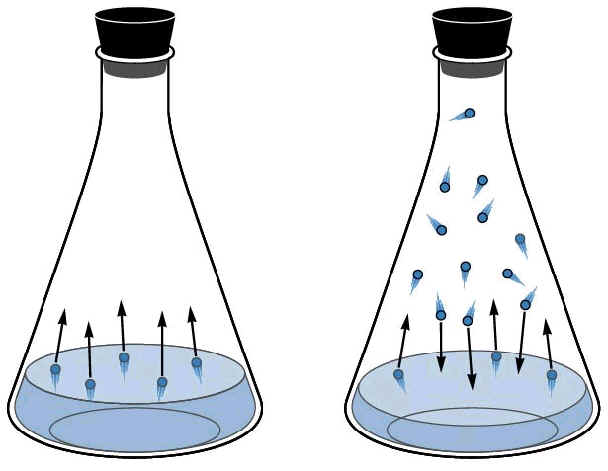Suppose that there are some molecules dissolved in the solvent, say a dye from coffee dissolved in water. These dye molecules usually have a far higher boiling point than water does and so have a lower vapour pressure, often effectively zero, at room temperature. Thus water evaporates at a far greater rate than they do and so the solution 'dries' leaving the dye behind. The dye is chemically unchanged by not being dissolved in a solvent. If the solution was, say, alcohol & water then as both have a large vapour pressure at room temperature both will evaporate and nothing will be left.
The water (solvent) evaporates due to the difference in vapour pressure at the liquid surface and the average value in a room. The liquid will evaporate trying to establish equilibrium, at which point the rate of evaporation will equal the rate of condensation of water vapour in the air entering the liquid. Usually equilibrium is never met and so all the liquid evaporates. However, on hot very humid days you may have noticed that it often takes far longer for a puddle to evaporate than on less humid days.
Not all the molecules in a liquid have the same energy, they follow a (Boltzmann) distribution of energies, many have low energy and fewer higher energy than the average. (Only the average energy is constant at constant temperature). Of these higher energy molecules (achieved by random jostling of molecules in solution) some of them are close to the surface and randomly are on the right trajectory to escape into the gas phase. As some of the most energetic molecules leave the liquid this will cool. (It will therefore receive heat from the surface it is sitting on and from molecules in the air (including water molecules), but if these processes are slow the liquid will be measurably cooled). You can feel the cooling effect of evaporation after stepping out of a hot shower.

